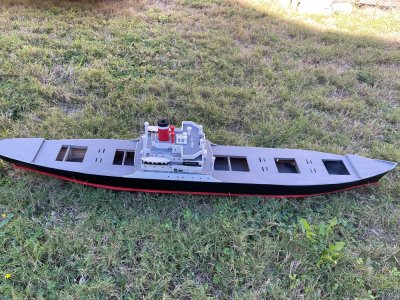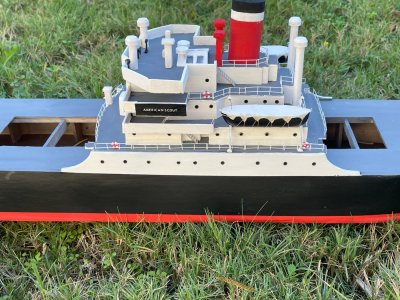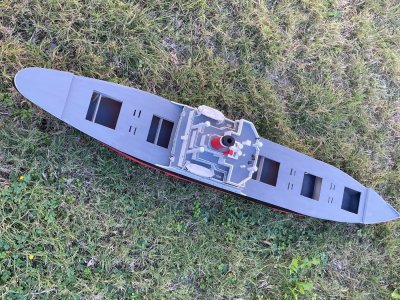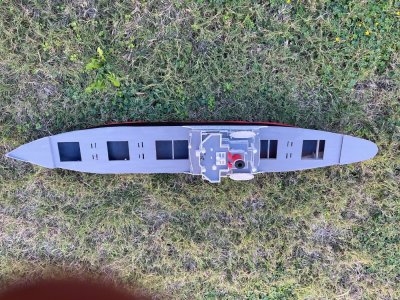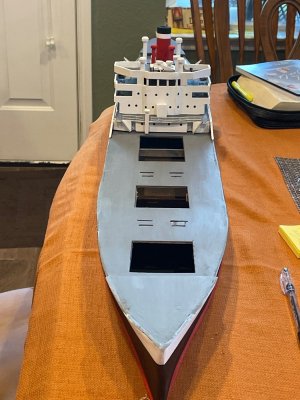That's awesome!Spotlight, wheel, binnacle, telegraph, and telephones added.
View attachment 559840View attachment 559841
-

Win a Free Custom Engraved Brass Coin!!!
As a way to introduce our brass coins to the community, we will raffle off a free coin during the month of August. Follow link ABOVE for instructions for entering.
You are using an out of date browser. It may not display this or other websites correctly.
You should upgrade or use an alternative browser.
You should upgrade or use an alternative browser.
Looking great, Vic!
Thanks, Paul!
Looking good Vic.From the front. Some of the rough spots will be eliminated later. View attachment 562020
I'm beginning my build of an American Scout as a WWII cargo ship - if anyone is interested the thread is here: https://shipsofscale.com/sosforums/threads/sterling-american-scout-wwii-cargo-ship.18290/



